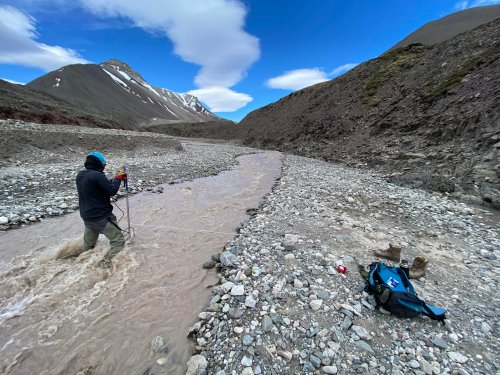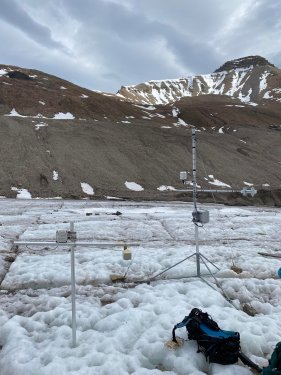By Jan Kavan & Vincent Haagmans
The purpose of the project was to study in detail summer ablation on the Bertil glacier and understand its implications for runoff production. For that, we carried out field work in Petuniabukta, central Svalbard, at the end of June and repeated it in September. We have used the field research station of Adam Mickiewicz University in Poznan and also cooperated with the station staff. We installed a network of ablation stakes and an acoustic depth sensor on the glacier surface. The automatic weather stations were also recording air temperature and humidity in the frontal part of the glacier as well as in the upper part. Runoff monitoring was ensured by deployment of automatic water level sensor in the outflow of the glacier. This was complemented with manual discharge measurement for calibration. Differential GPS measurements on the glacier surface were held in order to estimate long-term glacier surface thinning trend. Moreover, we were lucky enough with the weather in September and were able to perform detailed UAV-based mapping of the glacier frontal part and its forefield. We will be able to quantify glacier mass loss in its frontal part and describe dramatic terrain changes related to glacier decay in the forefield and massive sediment transport through the glacio-fluvial system.






























